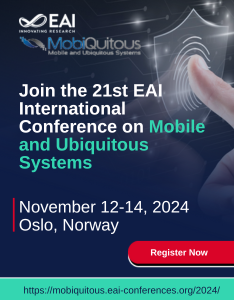
Research Article
Why Traditional Usability Criteria fall short in Ambient Assisted Living Environments
@INPROCEEDINGS{10.4108/icst.pervasivehealth.2014.255481, author={Martina Ziefle and Wiktoria Wilkowska}, title={Why Traditional Usability Criteria fall short in Ambient Assisted Living Environments}, proceedings={4th International Workshop on User-Centered Design of Pervasive Healthcare Applications}, publisher={ICST}, proceedings_a={USER CENTERED DESIGN}, year={2014}, month={7}, keywords={ambient assisted living (aal) older adults user diversity usability technology acceptance medical technology}, doi={10.4108/icst.pervasivehealth.2014.255481} }- Martina Ziefle
Wiktoria Wilkowska
Year: 2014
Why Traditional Usability Criteria fall short in Ambient Assisted Living Environments
USER CENTERED DESIGN
ICST
DOI: 10.4108/icst.pervasivehealth.2014.255481
Abstract
According to ISO 9241, traditional usability definitions focus on pragmatic aspects of technical systems, such as the ease of using a system (effectiveness, efficiency) and the perceived usefulness. While this definition was found to be highly applicable for a wide range of technical systems in the working context, it is a major question if the pragmatic approach is adequate for novel technical developments (e.g., health supporting systems) in the home sector. The integration of medical technology in home environments, such as Ambient Assisted Living (AAL) requests a high willingness of users to accept new forms of medical assistance and to rely on the technology in a very sensitive and intimate field. Also, user diversity is a serious issue, as increasingly more, and especially older users will have to master technical devices in the near future. In order to contribute to a basic acceptance understanding of such medical technologies against the background of user diversity, in this research, along with the traditional usability criteria, additional aspects of system usability are examined. Results show that the sole consideration of ease of use and the perceived usefulness is not sufficient for current designs. Future usability concepts should much more integrate additional aspects like trust in technology, wish for privacy protection, system reliability and fun, especially when designing technology solutions for older users.


